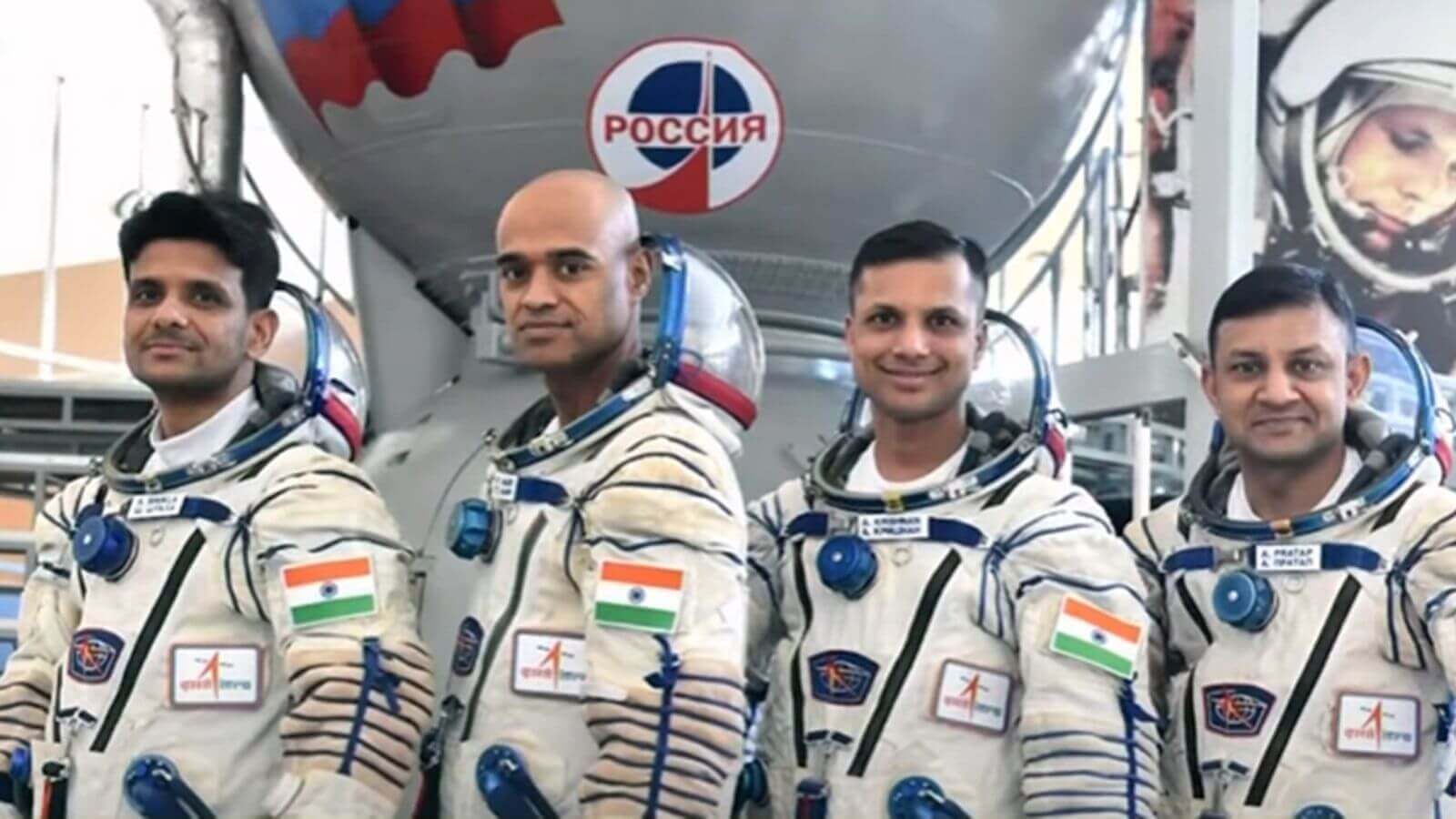Indian PM Narendra Modi announced the names of the four astronauts who are undergoing training for Gaganyaan, India’s first human space flight mission, at the Vikram Sarabhai Space Centre (VSSC) at Thumba, near Thiruvananthapuram, on Tuesday. “They are not just four names or individuals, they are four ‘Shakti’ of carrying the aspirations of 140 crore Indians into space,” Modi said.
Modi Announces Gangayaan Mission Astronauts
According to a statement released by the PIB, Modi bestowed ‘astronaut wings’ on the four astronaut designates, namely, Group Captain Prashanth Balakrishnan Nair, Group Captain Ajit Krishnan, Group Captain Angad Pratap, and Wing Commander Shubhanshu Shukla.
“Today Shiv-Shakti Point is introducing the entire world to Indian prowess,” Modi said, referring to the landing point of India’s Chandrayaan-3. He described the introduction of the four Gaganyaan astronauts, as a historic occasion. “An Indian is going into space after 40 years. However, now, the time, the countdown as well as the rocket belong to us,” the PM remarked.
Modi emphasised that every nation’s development journey has special moments that define not only the present but future generations, and he said that “today is such an occasion for India when the present generation can take pride in the historic achievements of the nation in land, air, water and space.” He recalled his statement about the beginning of a new ‘kaal chakra’ (time period) from Ayodhya, adding that India is constantly expanding its space in the global order, with glimpses visible in the country’s space programme.
Furthermore, Modi praised the austronaut-designates’ dedication and spirit in training, saying they are representations of India’s ‘Amrit’ (immortal) generation, which never gives up and has the strength to challenge all adversities. “The country’s wishes and blessings are upon you,” he added.
Prime Minister Narendra Modi announced names of India’s first ‘astronaut designates’—Group Captain Prashant Balakrishnan Nair, Group Captain Ajith Krishnan, Group Captain Angad Prathap and Wing Commander Shubanshu Shukla. https://t.co/KSNVuBETyc
— businessline (@businessline) February 27, 2024
Modi Lauds ISRO’s Contributions
The PM highlighted that India’s space sector’s key contribution is sowing the seeds of scientific temperament among young generations, stating that ISRO’s success instils in today’s children the desire to grow up to be scientists. “The countdown of the rocket inspires lakhs of children in India, and those making paper planes today dream of becoming scientists like you.”
Additionally, the Indian leader applauded Nari Shakti’s (Women Power) contribution to India’s space programme, saying, “Whether it is Chandrayaan or Gaganyaan, no such project can be imagined without women scientists.” He claimed that more than 500 women hold top positions in ISRO.
Modi explained that the failed landing of Chandrayaan-2 was a learning experience for every child in the country, whereas the successful landing of Chandrayaan-3 in August last year provided the youth with new energy. “This day is now celebrated as Space Day,” he explained.
“All of you are opening new doors of future possibilities,” PM Modi told the ISRO team. He stated that India’s space economy is expected to increase fivefold and reach $44 billion over the next 10 years, adding that India is becoming a global commercial hub in the field of space.
In his concluding remarks, the PM said, “Space science is not just rocket science, but it is also the biggest social science. Society benefits the most from space technology.” “All of you, ISRO and the entire space sector have a huge role in building a Viksit Bharat (Developed India).”
Gangayaan Mission
According to ISRO, the Gaganyaan mission aims to demonstrate human spaceflight capability by launching a crew of three individuals into a 400-kilometre orbit for a three-day trip and safely returning them to Earth by landing in Indian sea waters.
“Various precursor missions are planned for demonstrating the Technology Preparedness Levels before carrying out the actual Human Space Flight mission. These demonstrator missions include Integrated Air Drop Test (IADT), Pad Abort Test (PAT) and Test Vehicle (TV) flights,” ISRO stated.
ISRO explained that preparations for human space travel include the development of life support systems aimed at providing an Earth-like environment for the crew in space, emergency escape plans, and evolving crew management components for crew training, recovery, and rehabilitation.

